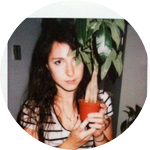
Laura Larocca
Brooklyn, New York
The City College of New York The Cryospheric Processes Laboratory
MSc Student
More
3,000 Specimens Collected!
Update: We have finished picking out our foram specimens (300 per sample x 10 samples) and have started the identification process. A favorite species so far is the Buccella frigida (Cushman, 1921)...
Sample Prep
Today we weighed and sieved the samples in the lab at AMNH. The samples are loaded with forams (big ones too) -- Kim and I are very excited! Take a look: 250 micron and 63 micron si...
Thank you!
Thank you so much for your contribution - you've made this project a success! I look forward to sharing the process and results with you. So excited!Many thanks, Laura
Determining the age of recent sediments using measurements of trace radioactivity
How do we use measurements of trace radioactivity to determine the age of recent sediments?
Foraminifera on Paleocast!
"In this episode we talk to Dr Tracy Aze from the University of Leeds about her research using planktonic forams to understand macroevolutionary change, as well as decoding their re...
Learn more about how foraminifera are used in paleoclimate reconstructions